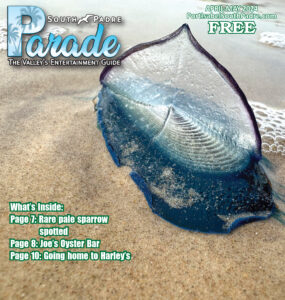By STEVE HATHCOCK
Special to the PRESS
Though its life as a city was short lived, Indianola, Texas played an important role in Texas history.
In 1844 the Adelsverein, or Society of Nobility, at Bierbrich am Rheibn, in Germany, had a stated mission which was to provide assistance in the emigration of several thousand Germans to the Republic of Texas. The Germans procured a piece of land called Indian Point along Matagorda Bay. Here, they would create a port of entry.
From the shore, direct routes could be established to both the Texas Hill Country (around Austin and San Antonio) and to the plains of West Texas.
An island, Indian Point was separated from the mainland by a series of small, brackish lakes, curving bayous and saltwater ponds. There was no mistaking the fact that the land had been created by wave action. Heavy, prolonged rains, drained rapidly from the firmly packed shell bank. Nowhere did the surface raise more than several feet above sea level. Not a wise choice of locations to build on, especially along this hurricane plagued coast.
In honor of its old title, the new port would be called, “Indianola.”
At first, the Germans failed miserably in their endeavor. It was cold and there was no wood to build homes. Temporary shelters kept out the worst of the elements the first winter. The following spring, most of the families resumed the trek to the lands west but some decided to stay on the coast. With the help of Sam White, the man who originally sold the land, the new town was soon a reality. Johann Scwartz and his family bought land from White, procured lumber and built the first house in what would later be called the lower Port of Indianola.
Others eventually followed suit. Over the next 30 years, men of all descriptions would crowd the gunwales of wooden ships and steamers to get their first glimpse of Texas and disembark at the famous docks. Miners, heading west to the gold fields of Colorado, whiskey salesmen, troops of soldiers assigned to frontier forts, and cattle buyers, all needing a nights lodging or a warm meal became common sights for the townspeople.
As early as 1848, companies in Indianola were experimenting with the process of canning beef. The initial market was the shipping industry since they needed food that wouldn’t spoil on long voyages. After the Civil War Texas longhorn cattle were so plentiful that their meat was valueless. Cattle were slaughtered for their hides and tallow and the meat was left to rot. But within a year or so Indianola was once again well on its way to becoming a port that would rival New Orleans itself. Ships began sailing directly from New York and New England. The New England ships brought cargoes of ice cut in the winter months and it was now possible to sip a cold drink in even the hottest months of the summer. A newspaper, the Indianola Bulletin, had correspondents as far inland as San Antonio. Besides storms, a fire did damage in 1867 and the same year brought a yellow fever epidemic.
The first shipment of mechanically refrigerated beef was sent from Indianola in 1869 and a couple years later a railhead connecting Indianola to the interior was built. By 1874, the port at Indianola was rated second to Galveston. But there was a dark future in store for the harbor. For 30years, Indianola managed to escape the fierce storms and hurricanes that actively bred in the warm Gulf waters. However, all this was about to change.
Following the same course as “Racers Storm” of 1837 that sprang up in the Yucatan, the storm surge of the hurricane that struck Indianola on September 16, 1875, destroyed three-quarters of the town, killing 176 people. One survivor estimated the height of the waves as 15 feet. Ever optimistic, the townspeople rebuilt. Eleven years later, on August 20, 1886, another storm surge destroyed every building in town. The survivors of this storm, fearing future catastrophe, moved away to the relative safety of Port Lavaca, Victoria, or Cuero. The old town site melted away, leaving little evidence it had ever been inhabited. Today, the site is commemorated with a park and a statue honoring the exploits of La Salle, the French explorer killed by his own men following his unsuccessful attempt to establish a colony along the Gulf of Mexico.
Want the whole story? Pick up a copy of the Port Isabel-South Padre Press, or subscribe to our E-Edition by clicking here.


Comments